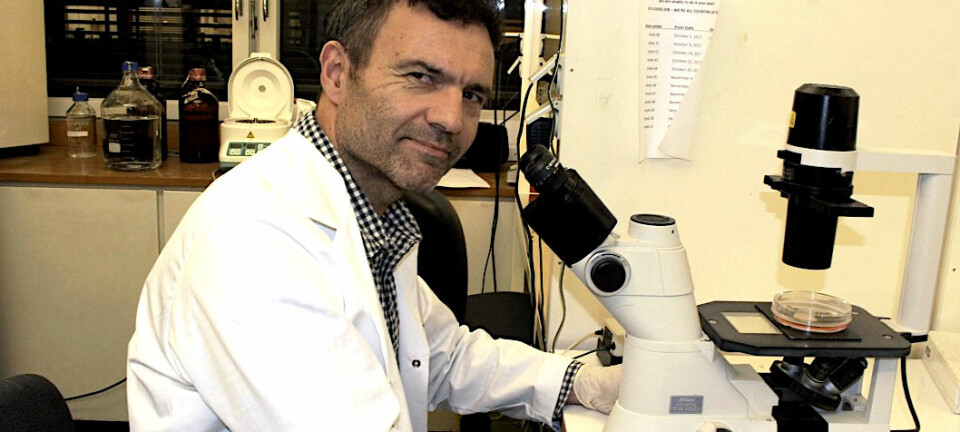This article is produced and financed by University of Oslo - read more
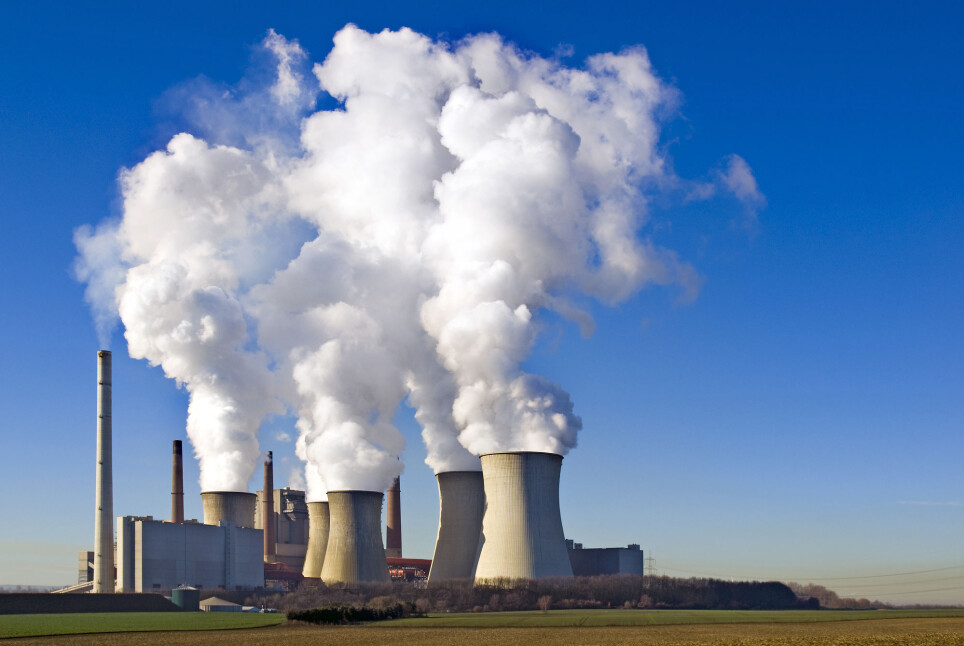
COVID-19 pandemic causes unprecedented drop in global CO2 emissions in 2020
Global CO2 emissions are expected to fall about seven per cent in 2020 due to the restrictions in place to slow the COVID-19 pandemic. The drop is likely to be only temporary, however, as daily emissions have already started edging back to late-2019 levels.
The Global Carbon Project (GCP) published on 11 December its annual analysis of trends in the global carbon cycle in the journal Earth System Science Data, including an updated full-year estimate of the decline in global fossil carbon dioxide (CO2) emissions in 2020.
Global fossil CO2 emissions are expected to fall about 7 per cent in 2020 based on estimates from four studies. The drop in emissions is largely due to the restrictions in place across the globe to slow the spread of coronavirus.
Daily fossil CO2 emissions fell 17 per cent globally in the peak of the lockdowns in April 2020, but daily emissions have since increased, and are now nearly as high as they were in late 2019 in some estimates. Whether the recovery of global daily emissions continues, remains uncertain.
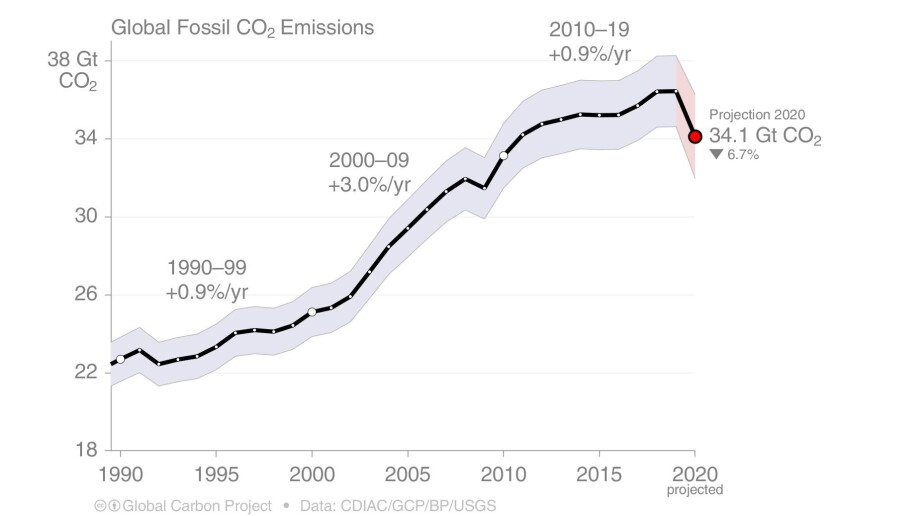
The emerging second wave
“Much of the world is now experiencing a second wave of the COVID-19 pandemic, but daily emissions have not dropped nearly as much in the second wave as during the first wave,” said Glen Peters. He is a research director at the CICERO Center for International Climate Research in Norway, and a member of the Global Carbon Project.
“Daily global emissions in late 2020 are now approaching levels similar to those in 2019, even though many countries still have various restrictions in place,” said Peters.
Researchers have used a variety of methods to estimate emissions in 2020 compared with previous years. Several methods have used ‘proxy’ data that co-evolve with emissions. As an example, mobility data from tracking services, such as Apple and Google, indicate the changes that have occurred in transport emissions. As in previous Global Carbon Budgets, monthly data have also been used, but these data suffer a longer publication lag.
“The effects of the global COVID-19 pandemic on emissions have varied hugely around the world, but it's clear that transport has been heavily hit everywhere that restrictions have been put in place to reduce infection rates,” said Robbie Andrew, a senior researcher at CICERO, and also a member of the Global Carbon Project.
While other sectors have also been hit by the pandemic, many have recovered since the first wave of restrictions in March and April. The effects on transport are more pronounced and have lasted longer.
Were emissions approaching a peak?
The growth in global fossil CO2 emissions started slowing down in the last decade, decreasing from an annual growth of 3 per cent in the 2000s to 0.9 per cent per year in the 2010s. The slowdown is largely due to significant changes in the use of coal, with global coal use having declined since around 2014. Global fossil CO2 emissions grew by just 0.1 per cent in 2019.
“An emerging discussion pre-2020 was whether global fossil CO2 emissions were showing signs of peaking. COVID-19 has changed this narrative to one that involves avoiding a rebound in emissions and asking if emissions have already peaked,” said Peters.
After falling substantially as a result of the economic slowdown in the aftermath of the 2008 Global Financial Crisis, global fossil CO2 emissions rebounded a massive 5 per cent in 2010 as economies across the world were picking up speed again. The researchers fear that this could happen also in 2021.
“Some of our datasets indicate that daily global emissions in the later part of 2020 are approaching the levels seen in the later part of 2019, indicating emissions may be close to a full rebound despite the presence of a second wave of the COVID-19 pandemic in some regions,” said Peters.
Emissions are likely to increase in 2021, but how much is uncertain
Many commentators have suggested it will be several years before emissions return to pre-2020 levels, if they ever return at all.
“There is significant uncertainty in our projected emissions for 2020, although we have several lines of evidence that agree. Similarly, there is considerably uncertainty regarding how rapidly and by how much emissions will rebound in 2021,” said Andrew, adding that “it seems almost certain that emissions are due to rebound next year.”
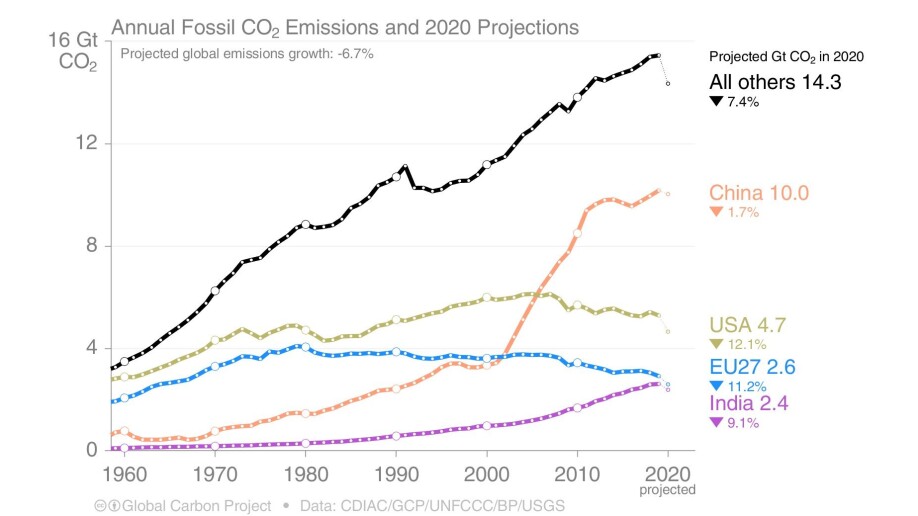
The biggest emission drops in 2020 have occurred in the US and the 27 EU member states, where global fossil CO2 emissions are estimated to have fallen by 12 per cent and 11 per cent, respectively, mainly due to large reductions in the use of coal in electricity generation and of oil in transportation.
India has also seen a large decrease in emissions in 2020, with a drop of 9 per cent. In China, however, emissions are estimated to have declined by a mere 1.7 per cent this year.
China leading a return to growth
Chinese emissions amount to 27 per cent of the global total and China’s early recovery from the pandemic gives insight into how global emissions may develop in the coming months and years.
“China was the first country to have a major lockdown, and the first country to come out of a major lockdown,” said Jan Ivar Korsbakken, a senior researcher at CICERO, and a member of the Global Carbon Project.
“All our datasets show that China experienced a big drop in emissions in February and March, but the datasets differ in the level of emissions towards the end of 2020,” Korsbakken said.
“In late 2020, China is at least close to having the same level of daily emissions as in 2019, and indeed some of our estimates suggest Chinese emissions may have actually increased for the year as a whole in 2020 relative to 2019, despite the pandemic,” he added.
The future is yet to be told
The COVID-19 pandemic has yet to subside, and even with vaccines beginning to appear, its future evolution remains highly uncertain. However, the course of emissions in the next few years is likely to be dominated by choices made by governments.
“Countries want to bring their economies back to normal as quickly as possible, but the type and speed of the recovery is really a choice,” said Peters.
“Smart recovery packages can ensure that 2019 was when global emissions peaked and they can also put countries on a path towards declining emissions in the presence of a growing economy,” Peters added.
Corinne Le Quéré, a Royal Society Research Professor at the School of Environmental Sciences at the University of East Anglia contributed to this year’s analysis. She said: “All elements are not yet in place for sustained decreases in global emissions, and emissions are now slowly edging back to 2019 levels.”
“Government actions to stimulate the economy at the end of the COVID-19 pandemic can also help keep emissions down and tackle climate change. Incentives that help accelerate the deployment of electric cars and renewable energy, and support walking and cycling in cities are particularly timely given the deep perturbations observed in the transport sector this year,” Le Quéré added.
Continued growth in emissions drives increases in atmospheric concentrations
The unprecedented drop in global fossil CO2 emissions has had a negligible effect on CO2 concentrations in the atmosphere, according to Peters.
“The climate system is driven by the total amount of CO2 put in the atmosphere over centuries. Even though emissions fell in 2020, they were still around the same levels as in 2012, and the drop is insignificant in comparison with the total amount of CO2 emitted over the past centuries,” said Peters.
“Global warming stops when emissions get to around zero, and COVID-19 has not changed that,” he added.
Atmospheric CO2 concentrations are projected to increase by 2.5 ppm in 2020, bringing the average concentration in 2020 to 412 ppm. This increase is essentially unaffected by the drop in emissions in 2020.
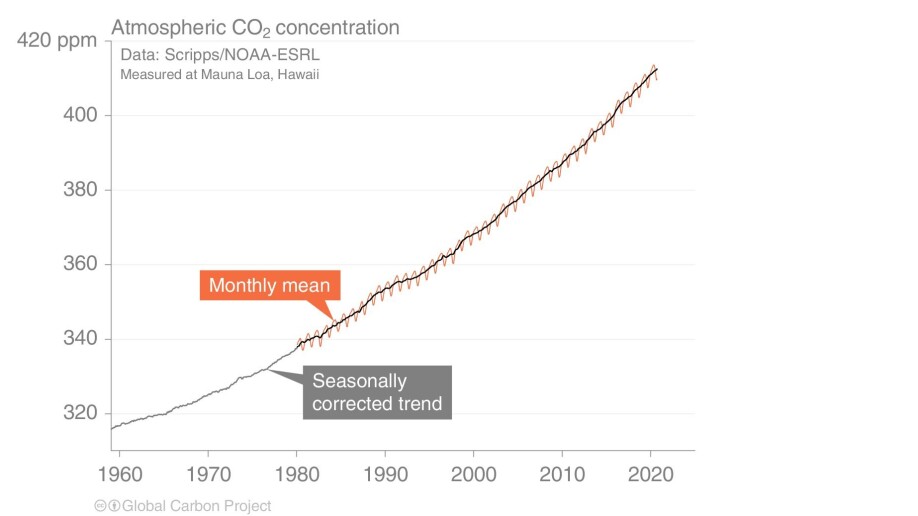
Reference:
Pierre Friedlingstein et.al.: Global Carbon Budget 2020. Earth System Science Data, 2020.








